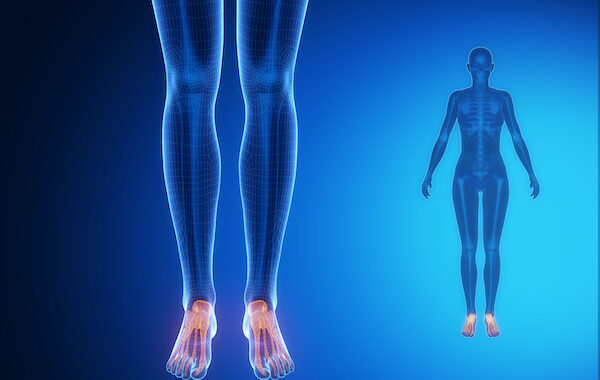Osteoporosis (meaning “porous bone”) is a condition characterized by excessive bone tissue loss and/or insufficient bone formation.
Most people associate osteoporosis with the spine and hips, as well as the wrists and ribs. However, this condition can also cause foot injuries. Yes, osteoporosis can cause redness, swelling, and discomfort in the extensor tendons, located at the top of the foot, as well as cramp-like pain when walking.
Furthermore, because of the loss of structure, the bones can become brittle and are more likely to fracture. Foot fractures caused by osteoporosis can take the form of stress fractures or tiny cracks in the bone.
You Should Never Ignore Foot Pain
Some people seek medical help from a podiatrist for foot pain, not realizing they have small cracks in their foot bone or severe bruising within the bone caused by osteoporosis.
Unexplained foot fractures could be the first indicator of osteoporosis.
Osteoporosis is nicknamed the “silent crippler” because it usually worsens over time without showing any signs or is not detected until a person experiences intense pain from a broken bone.
People with osteoporosis have weakened bones, which makes them more prone to bone fractures, especially in the foot. Because the bones are brittle, even the most basic weight-bearing activities such as walking can cause the bones in the foot to crack. Many osteoporosis patients who visit their podiatrist for foot discomfort and pain are shocked to find out that they have a stress fracture despite having no foot injury.
Ignoring Osteoporosis Pain Will Only Make Things Worse
While women over the age of 50 are more likely to develop osteoporosis, younger women and men are also at risk. Early signs of osteoporosis may include intense pain when you walk and redness, swelling, and discomfort on the top of the foot.
Osteoporosis patients often do not seek medical attention for their symptoms for weeks (or even months), believing that the pain would go away on its own. However, that is misleading and very, very dangerous.
Fractures in the later stages of osteoporosis can occur from something as simple as getting out of bed in the morning. These fractures can happen anywhere in the body, but they are most common in the shin bone, heel, hip and lower back, and foot. Foot fractures are often caused by repetitive trauma and degeneration from wearing flimsy, uncomfortable, and ill-fitting shoes. Because of this loss of structure, the joints in the foot may eventually collapse, which can result in arthritis and severe pain.
Therefore, if you have pain in your foot, get it checked by a podiatrist right away!
What Should You Do?
- The best advice is not to dismiss any type of foot pain. Early diagnosis and treatment can make all the difference in your foot recovery. Orthopedic surgeons can detect osteoporosis using a bone density scan or “DEXA” scan, which assesses calcium and other mineral levels in the bones using low-dose imaging or possibly a standard X-ray and CT.
- If you are diagnosed with osteoporosis, it is critical to protect your feet from stress fractures. Wear shoes with adequate support and padding, consider buying athletic running shoes that allow for breathability as well as snug and comfortable fit. To effectively protect your foot, we recommend custom orthotics. Even if your bones are not weakened by osteoporosis, orthotics can still help you by providing extra stability, which may prevent you from falling and breaking other bones.
- Get enough calcium and Vitamin D. Foods that are high in calcium include dairy products (such as milk, cheese, and yogurt), spinach, kale, okra, collards, soybeans, white beans, some fish (like sardines, salmon, perch, and rainbow trout), orange juice, oatmeal, breakfast cereal, etc. Foods high in Vitamin D include fatty fish (like tuna, mackerel, and salmon), cheese, egg yolks, orange juice, soy milk, etc. Mild exercise, such as walking, jogging, swimming, and dancing can also help you build bone strength and avoid these excruciating fractures.
Your feet are crucial in making aging easier and less agonizing. Take care of your overall health and pay close attention to your feet to avoid the risks of osteoporosis! If you experience foot pain that goes beyond usual soreness, you should consult a podiatrist for further diagnosis and treatment immediately.

